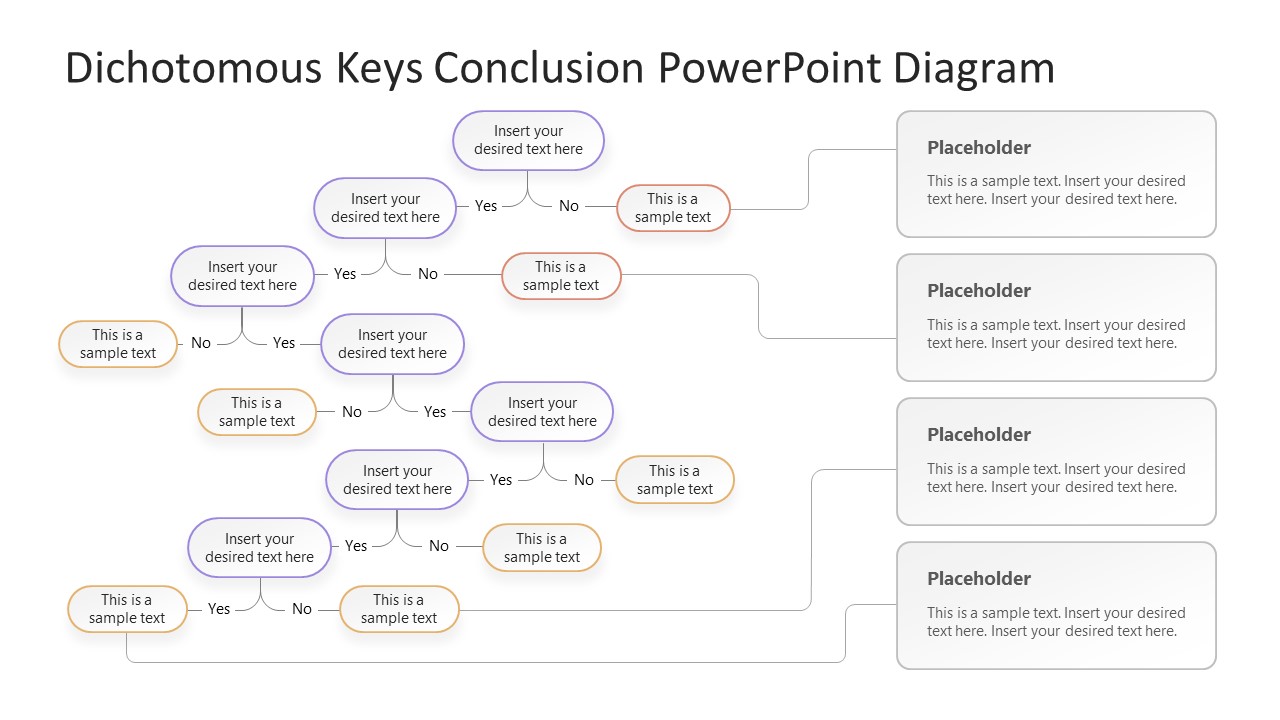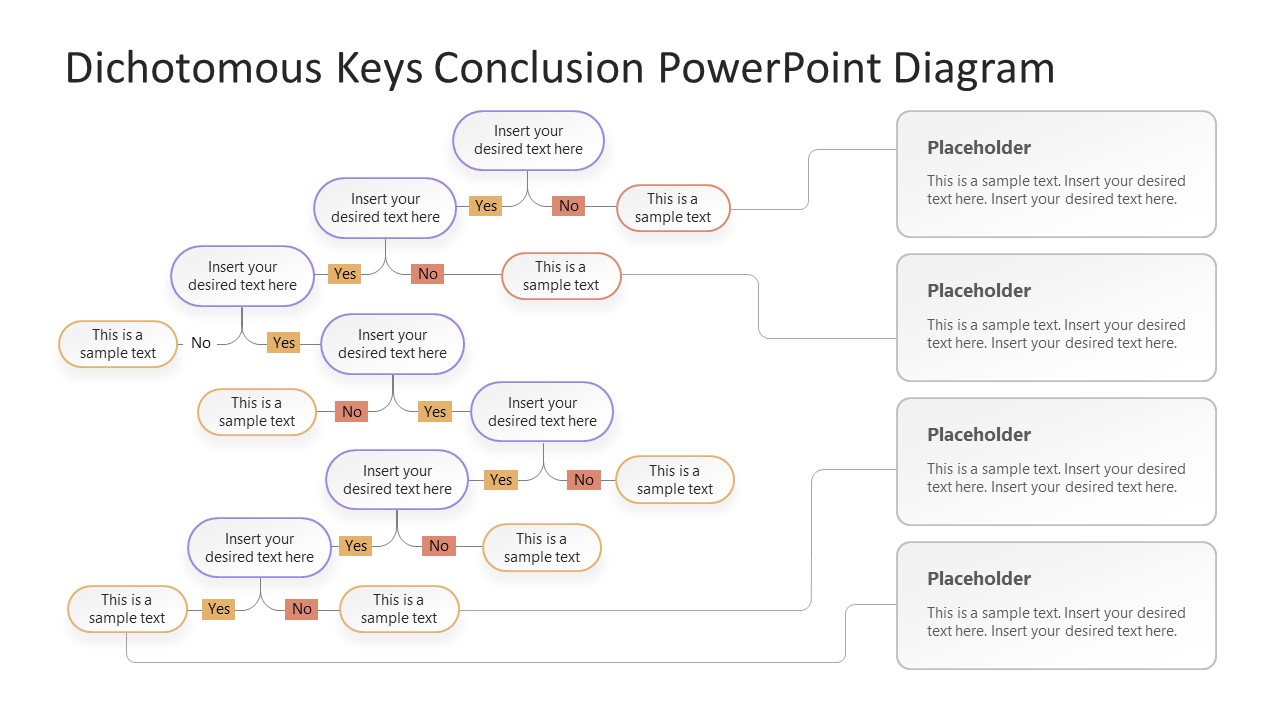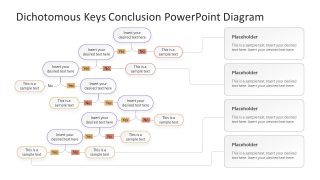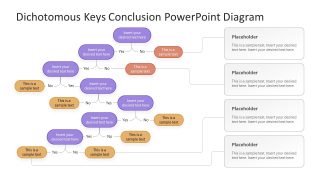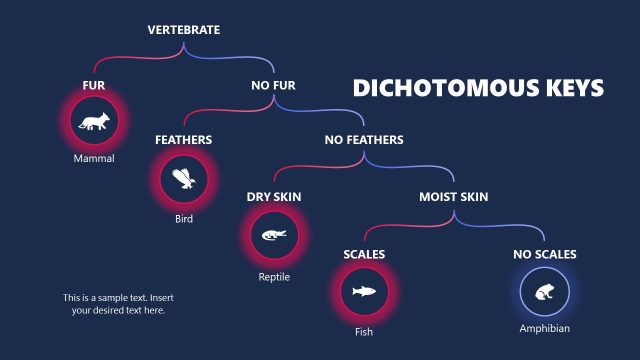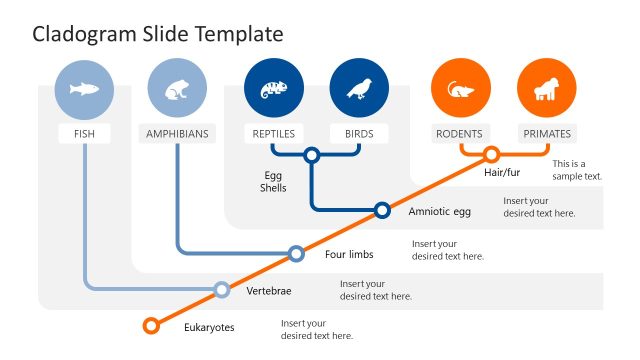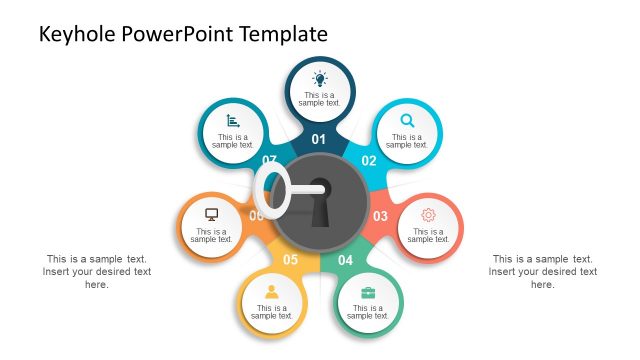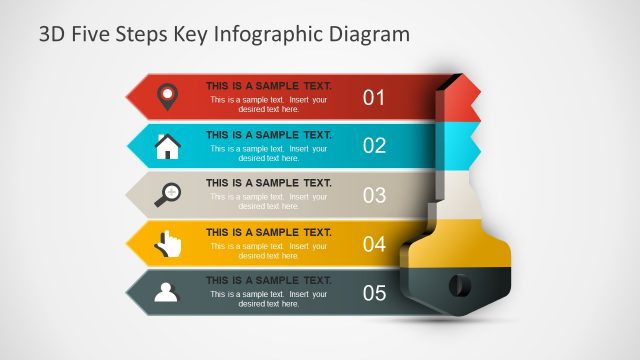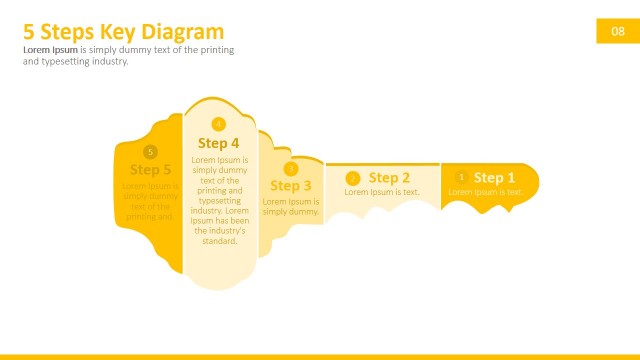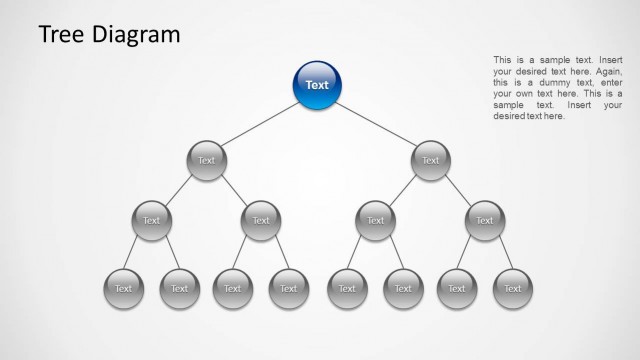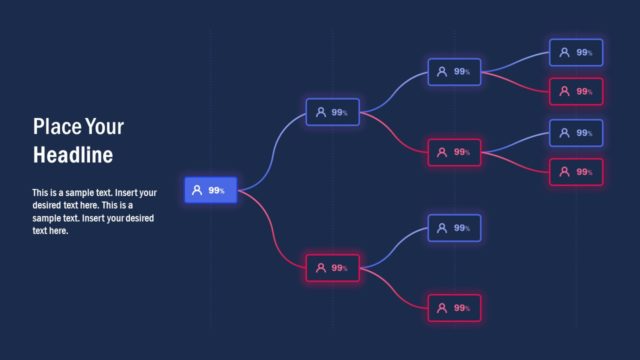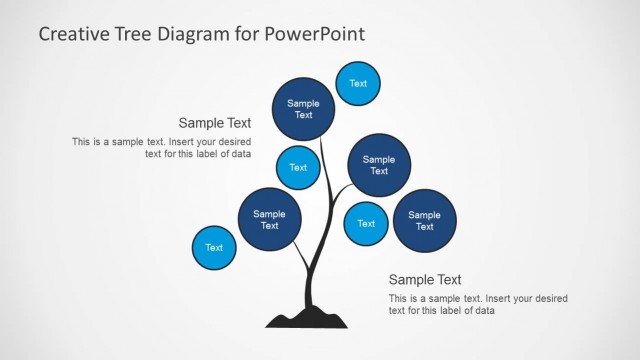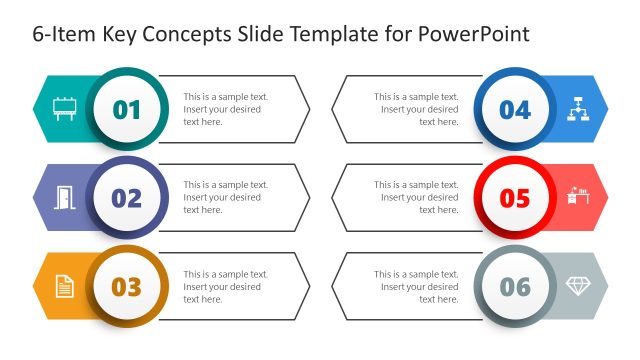Dichotomous Keys Conclusion PowerPoint Diagram
Download and edit our Dichotomous Keys Conclusion PowerPoint Diagram for presenting the key to identifying a new species or unknown entity by identifying their striking features. A dichotomous key is a flowchart-like diagram tool that helps understand the phylogenetic belonging of an organism by choosing appropriate options. This tree diagram divides into two branches at every point and thus introduces two groups at each level. For instance, if a scientist has identified a new bacterial species, he might start from a single prokaryotic origin. So, the first step of this dichotomous key is prokaryotic & eukaryotic. Further, in this series, other levels would indicate the groups: Gram-negative & Gram-positive, cocci & bacillus, and glucose fermenter & non-fermenter. Another example of a dichotomous key is in plant identification and salt analysis. It will work on a similar pattern of differentiating various groups based on their contrasting traits.
This PPT template is a great solution to create a dichotomous key in moments. It features a series of editable boxes, including placeholder text for mentioning the group names. The first slide of our Dichotomous Keys Conclusion PowerPoint Diagram shows a seven levels dichotomous key diagram with oval shapes. These shapes are not color filled and carry simple text with yes & no labels on the arrows. For guiding points, we have added four text boxes alongside the key diagram to indicate major groups or phases. Likewise, the following slide has a similar diagram but varies for the colored boxes on the yes & no labels. Users can also choose the third slide having a colored dichotomous key template. Here, presenters can mention the true or correct options with distinct colors and the other options using another color shade.
Our dichotomous key conclusion diagram is an easy layout for making a dichotomous key for scientific journals and presentations. These can also be provided along with some products and research publications where a new species has been identified. So, download and try editing this dichotomous key presentation template for your scientific and academic use cases now!
